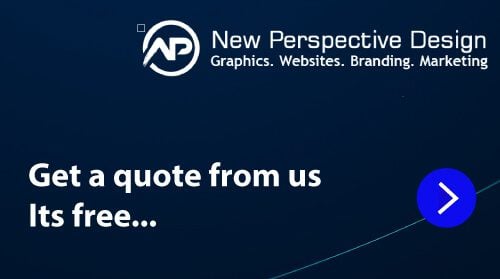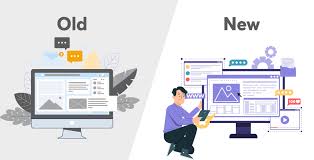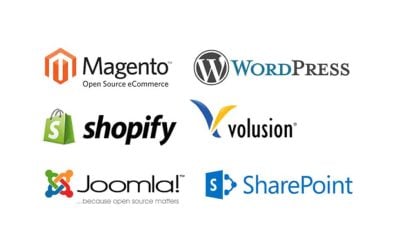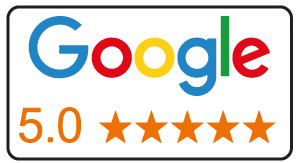The Pros and Cons of Using an AI Website Builder to Build Your Website
What are the pros and cons of AI built websites?
We though it would be great idea to do some testing before we write a article about The Pros and Cons of Using an AI Website Builder although e already had our thoughts reserved .
A Real-World Comparison: AI Website Builder vs. Professional Developer
To offer a fair comparison of the pros and cons of AI website builders and back up our points, we conducted a test by using an AI website builder to create a layout for Ledgerwood Financial Services. Below is the prompt we used:
“Create a website for Ledgerwood Financial Services with a sophisticated corporate design, featuring navy blue and bronze colors. The homepage should open with a full-width image of businessmen, overlaid with the text “Expert Financial Solutions for Over 80 Years” and a “Get Started” button. Include an “About” section that introduces Ledgerwood’s 80 years of expertise in providing personalized financial planning, investment management, tax advisory, retirement planning, and wealth creation strategies. The “Services” section should display images for each of these five core services with short descriptions underneath. At the bottom, include a client logo slider showcasing key partnerships, followed by a call to action encouraging users to “Contact Us Today.” The website should exude a professional, high-end feel, consistent with Ledgerwood’s reputation.”
The result of our Prompt:

And here is the design by one of our developers.

1. Layout and Structure
- Developer Design : The layout is well-structured, with clear visual hierarchy and balance. The placement of content feels intuitive and user-friendly. The use of white space allows each section to breathe, making it easier for users to scan and understand the information. The full-width banner and the about section flow naturally into the service offerings, followed by a client logo slider and a strong call to action.
- AI Design (Second Image): While the layout is clean, it lacks the same thoughtful structure. The spacing between elements, particularly the services and partner logos, feels uneven. There’s an overuse of white space, which creates a sense of disconnection between sections, making the page feel fragmented.
Visual Appeal and Branding
- Developer Design: The branding is consistent and professional, with a cohesive color scheme of navy blue and bronze that aligns well with the corporate tone of Ledgerwood Financial Services. The colors are used strategically to highlight important calls to action (CTAs) like “Get Started” and “Learn More,” drawing attention without being overwhelming. The imagery, including professional business images, reinforces the brand’s credibility.
- AI Design: The color scheme is less vibrant, and the overall design lacks the same attention to branding details. While it uses navy blue, the contrast between colors is not as refined. Additionally, the hero image is much less engaging, and there’s a mismatch between the overall tone of the site and the images selected. The banner image of the coffee cup, for example, feels somewhat out of place for a financial services company, reducing the professional impact.
Typography
- Developer Design: Typography is clear and professional, with proper font hierarchy and line spacing that enhances readability. The font sizes vary appropriately for headlines, subheadings, and body text, guiding users’ attention to important areas of the website, such as the services section and CTA buttons.
- AI Design: The fonts in the AI web design are basic and lack the refinement found in the developer’s design. The headings and body text don’t contrast as effectively, making it harder for users to differentiate between sections. There’s also less visual emphasis on key information, such as service descriptions or CTAs.
User Experience and Navigation
- Developer Design: The user experience is well-thought-out, with clear navigation and sections that follow a logical flow. The inclusion of elements like the client logo slider and “Contact Us” CTA at the bottom adds trust and helps drive conversions. Users can easily understand what Ledgerwood offers and are encouraged to take action throughout the page.
- AI Design: The navigation in the AI design is functional but lacks the same level of user engagement. For instance, while the CTA buttons exist, they don’t stand out as much as in the developer’s version. The partner logos are also grayed out, which diminishes the trust-building effect they’re supposed to create.
Imagery and Media
- Developer Design: The use of high-quality, professional images aligns with the financial services theme. The images used in the “Our Services” section effectively represent each service offered, giving users a visual context for the business.
- AI Design: The hero image and service-related images are much less representative of the business. The lack of relevant imagery diminishes the professionalism and clarity of the services Ledgerwood provides.
Call to Action
- Developer Design: The CTAs in the developer design are prominent, clear, and well-placed. The “Get Started” button in the hero section immediately engages the user, while the “Contact Us” button at the bottom provides a secondary opportunity for conversion. The buttons stand out due to their color contrast and strategic placement.
- AI Design: The CTAs are present but feel less compelling. The “Get Started” button blends too much into the background, and there’s less visual emphasis on the action you want users to take. This could lead to lower conversion rates.
This real-world test showcases one of the major cons of using AI for website design: while AI can generate a website quickly, it often lacks the deep understanding of branding, user experience, and conversion optimization that a human designer brings.
With the recent influx of AI tools many are turning to AI website builders for fast and cost-effective solutions to creating an online presence. But is it the right choice for you? In this article, we explore the pros and cons of using an AI website builder to build your website and address key questions, such as “Should I use AI to build a website?” and “What are the benefits of AI in web design?”
Should I Use AI to Build a Website?
Using an AI website builder can be an excellent solution for certain needs, but it’s important to weigh the pros and cons before deciding. AI tools offer speed, convenience, and cost savings, but they also come with limitations in design, customization, and SEO.
What Are the Pros and Cons of AI?
Pros of Using an AI Website Builder
Cost Efficiency
AI website builders are initially much more affordable than hiring a full development team. This makes them an appealing choice for startups, small businesses, and individuals with limited budgets. However, while the upfront costs are lower, it’s important to consider potential hidden costs (discussed later in the cons section) related to redesigning or refining the website after the AI’s limitations become apparent.
Speed and Convenience
AI tools are known for their speed, allowing you to generate a functional website in a matter of minutes. This is particularly helpful when time is of the essence, such as for a product launch or a rebranding campaign. However, while AI is fast at creating something, it’s often unplanned, which may require costly revisions or redesigns down the road.
Automation and Maintenance
AI-powered platforms often offer built-in automation features, such as automatic updates and performance suggestions. These tools help reduce the manual effort needed to maintain and optimize your website, particularly for routine tasks like applying security patches or adjusting content based on user behavior.
Scalability
Many AI website builders offer easy scalability. You can add new pages, blog posts, or products as your business grows, often with just a few clicks. This makes AI a suitable option for businesses that anticipate needing to expand their online presence over time.
Cons of Using an AI Website Builder
Lack of Human Design Intuition
AI-generated websites often lack the creative and strategic touch that a UX designer would bring. While AI can put together a website quickly, it often results in a rigid, template-based layout that lacks flexibility and doesn’t offer the kind of brand differentiation you may want. Human designers can intuitively create a user experience that is more engaging and tailored to your audience’s needs, which AI tools often struggle to achieve.
Customization Limitations
AI builders are generally effective at creating simple websites but lack the ability to implement complex customizations. For example, if you need to integrate a MySQL database or add custom back-end features, AI tools won’t be enough. You’ll still need to hire a developer to handle these more sophisticated tasks, which can increase costs significantly.
SEO Issues
AI-generated content often pulls from aggregated information, resulting in non-unique content that may be too similar to other websites using the same tool. Search engines prioritize original content, and using AI for content creation can harm your SEO rankings. Google is unlikely to index pages that don’t offer something unique or valuable, which can negatively affect your website’s visibility.
Misleading Claims About No Technical Skills
AI website builders often claim that no technical skills are required, but that’s only true for basic websites. In reality, human expertise is still necessary for prompt engineering, coding, and marketing strategies to maximize the potential of these tools. While the interface may be user-friendly, creating a truly effective website still requires knowledge of SEO, conversion optimization, and custom development to get the best results.
Copyright Concerns
Another potential drawback is the issue of copyright. AI-generated content may not be eligible for copyright protection, leaving businesses vulnerable to legal risks. This can be particularly problematic for companies that rely on unique content to stand out in the market. You may need to invest additional time and resources to rewrite AI-generated content or design elements to ensure originality.
Hidden Costs and Redesign Challenges
While AI tools can create a basic website quickly and cheaply, the lack of planning in the design process can lead to costly revisions later. The site may not convert as well as you hoped, and you might find that hiring a designer or developer to fix issues with layout, functionality, or SEO ends up costing more in the long run than simply working with a professional from the start. In short, AI is great for generating something quickly, but it often requires more time and money down the line to refine the results.
The use of AI in web design offers several benefits:
- Quick Setup: AI can generate websites rapidly, allowing you to focus on growing your business rather than spending months in development.
- Cost Savings: AI tools are generally more affordable than traditional web design services.
- Built-in SEO Suggestions: Some AI website builders offer built-in SEO tools that can help optimize your website, although they aren’t always as effective as human-driven SEO strategies.
Is It Safe to Use AI Websites?
In most cases, AI websites are safe to use, but there are some considerations to keep in mind. Security patches are often automatically applied, and reputable AI website builders are typically compliant with industry standards. However, as with any website, it’s crucial to ensure your site is secure by implementing HTTPS, secure payment gateways, and up-to-date software.
AI is a reinforcement tool.
Have look a it his the same query asking chat GPT a question. If you don’t understand by now that these systems are designed to mirror you to keep you engaged even if it means a lie look at the image below:
Prompt 1: Chat Gpt I think SEO is the best thing to invest in given how AdWords is going


What’s happening here?
AI doesn’t have opinions. It mirrors your framing and attempts to agree and expand on it to keep the conversation going. So if you say:
- “SEO is the best,” the AI backs SEO.
- “AdWords is the best,” now AdWords gets the praise.
Not because it’s lying, but because it’s optimizing for relevance, flow, and helpfulness based on your premise—not some universal truth. This is reinforcement, not reasoning.
Using an AI Website Builder to Build Your Website
While AI website builders offer website cost savings and speed, they cannot replace the human touch required for high-quality design, customization, and marketing strategy. Before using AI to build your website, carefully consider the pros and cons to ensure it aligns with your business needs and goals. AI website builder are indeed a powerful tool and most of the cons can be mitigated by using it in conjunction with web developers, graphic designers and marketing specialist.
Update Google Digs into AI
Quality Rater Guidelines Update
Automated or AI-generated content may now earn a Lowest rating.
This puts a whole industry of AI-generated writers, blog tools, image generators, and AI website builders under pressure.
Users need to be informed of the risks of using AI to create their content.
We started seeing this trend quite a while back.
After the initial AI release, SEO gurus went nuts. They published a whole bunch of videos telling people how to rank websites in minutes, how to generate 1000 blog posts, how to automate entire websites.
They were basically teaching people how to manipulate search engine rankings. And they got hit personally when Google rolled out spam updates. Because what they were pushing — all of it — was spam.
Then we started seeing ranking drops in AI-generated content. Even poorly written human content started outperforming fully AI-generated stuff. Just because it had some kind of real voice to it.
Now we’re seeing the next stage.
This latest update is about “search quality” — but also, as we’ve said before, it’s to incentivize people to keep creating content so Google’s own AI can learn from it as it crawls the web.
You’re not just publishing to be seen anymore — you’re publishing so their system has more data to train on.
And what do you get back for that?
A chance to maybe land in a box somewhere in AI Overviews with a 0.98% click-through rate — while your actual website sits lower and lower in the results.
And just wait — they haven’t even worked ads into it yet.
We’ve already seen the shift. Google Ads reps are emailing and calling more. They’re pushing for ad revenue now that AI Overviews are starting to eat into their own ads. That won’t last. They’ll adjust that too. It’s all in the playbook.
And the platforms you’re using to build those AI-generated sites?
They won’t tell you any of this. They won’t warn you.
They won’t tell you that using their tool to spit out 20 pages of the same-sounding service content, with no voice, no intent, no difference between you and the next guy — can get your site flagged as low quality.
They won’t tell you that using AI to build your website, with generic blocks of text and zero personalization, is not a shortcut — it’s a risk.
Google has made it clear.
If your content has no voice, no human input, no actual value — it won’t just rank low.
It might not rank at all.









![The Impact of Having a Business Website: A Survey Conducted by New Perspective Design in South Africa [Case Study 2025]](https://www.newperspectivestudio.co.za/wp-content/uploads/2025/02/The-Impact-of-Having-a-Business-Website-survey.jpg)





